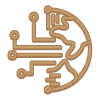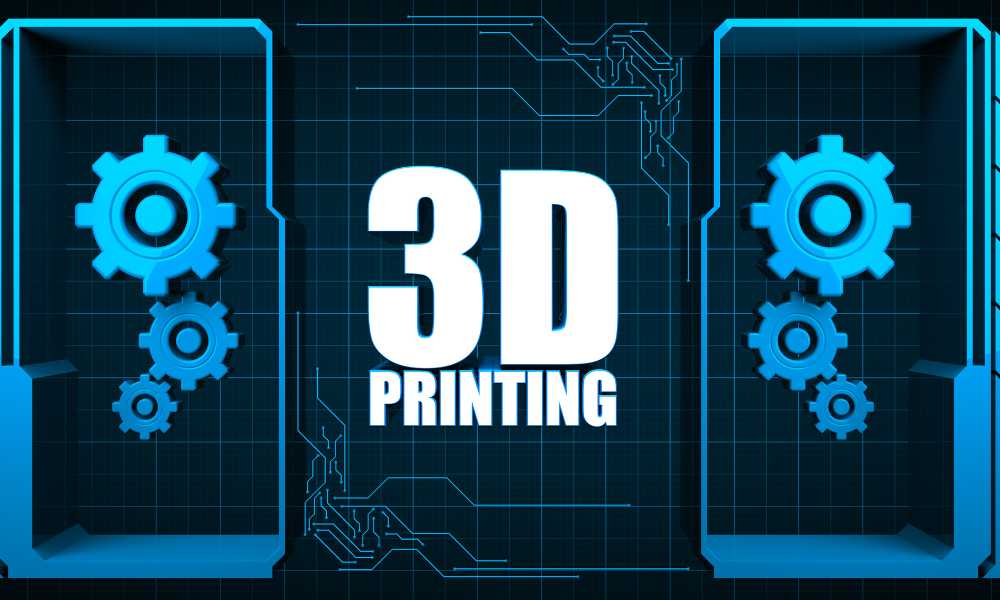The manufacturing sector’s adoption of technology has significantly improved output quality overall. To better satisfy customer demands, many businesses have adopted new strategies. By adding additional material layers, the industrial production process of 3D printing allows for the creation of metal items.
In contrast to the traditional subtractive manufacturing techniques like etching, this strategy is known as additive manufacturing (AM). The AM method was created almost 20 years ago, although it was for a different course. Manufacturers used it for specific purposes like quick prototyping.
Manufacturers can now produce parts with improved geometrical and mechanical characteristics thanks to technological innovation. Traditional production methods were unable to do this. Manufacturers may now consistently produce things with complex forms and materials thanks to specific AM techniques.
This technology has advanced significantly in the aerospace and energy sectors. Electronics, food, and medical applications are also advancing significantly. For instance, GE Aviation established a whole division devoted to AM in 2016 and is now utilizing the method for the quick production of its turbine parts. On the other hand, Siemens employs AM to construct gas and steam turbines.
3D Metal Printing Techniques
Direct Metal Laser Sintering (DMLS) and Selective Laser Melting are the two basic methods for printing metal in three dimensions (SLM). Both of these are powder bed fusion 3D printing processes. Although there may be some discrepancies between these two technologies, they ideally take the same approach.
Some similarities include layer-by-layer assembly of parts and employing a laser to scan and selectively melt or fuse metal powder particles. Additionally, metal granules are used in the operations. The particle bonding method and patents are what distinguish DMLS from SLM. While DMLS employs metal powders with various melting points that fuse molecularly at high temperatures, SLM uses metal powders with uniform melting temperatures to melt the particles.
Other AM processes include Binder Jetting, Electron Beam Melting, Laser Metal Deposition, Selective Laser Sintering, and Ultrasonic Additive Manufacturing (UAM). Their uses and accessibility, however, are restricted.
What Steps are Taken in a 3D Manufacturing Process for Metal, then?
1. To lessen the oxidation of the metal powder, fill the build chamber with an inert gas such as argon.
2. Cover the build platform with a thin layer of metal powder.
3. Employ a powerful laser to scan the component’s cross-section.
4. Raise the metal powder’s temperature to the ideal construction temperature.
6. Scan the entire region of the model to make sure it is completely solid. 5. Fuse or melt the metal particles together to generate the next layer.
7. Lower the build platforms by one layer of thickness
8. Continue the procedure till the portion is finished.
9. Bring the trash can to room temperature.
10. Take the parts off the build plate and get ready for the post-processing
11. Manually take away any extra powder.
12. Heat treat the components to reduce any lingering tensions.
13. Continue post-processing by the prescribed order.
What Makes 3D Printing in Metal Unique?
The several elements that define the overall process and mechanism of metal 3D printing include;
Parameters for DMLS and SLM Printers
The machine’s manufacturer specifies most process variables in DMLS and SLM. In 3D printing metal, the layer height ranges from 20 to 50 microns. This depends on the metal powder’s form, flowability, and particle size distribution.
Larger configurations can reach dimensions 500 x 280 x 360 mm; however, a typical metal 3D printing system is 250 x 150 x 150 mm. Dimensional precision for metal 3D printing can be as high as 0.1 mm.
The construction platform is attached to parts of a metal 3D printer, which limits the print area to an XY plane. As just 5% of the metal powder used in the various methods is wasted, it is extremely recyclable.
Orientation of the Part and Support Structures
Part orientation is done at an angle to increase strength in important directions and reduce the likelihood of warping. However, this results in more support, material waste, longer build times, and ultimately higher costs.
Support structures are essential due to the high processing temperatures and distinctive lattice patterns. The purpose of support structures is to:
• Provide a suitable platform for the preceding layer to be constructed upon;
• Prevent warping by anchoring the part to the build platform;
• Remove heat from the worked-on part to provide a controlled cooling pace.
Adhesion of Layers
Parts made with DMLS and SLM have almost isotropic thermal and mechanical characteristics. When they are first produced, they have essentially little internal porosity and a minimum internal porosity of 0.2% to 0.5%. Parts made of metal using 3D printing are more pliable, tougher, and stronger than conventional ones. They are susceptible to getting tired though.
Hollow Sections and Lightweight Constructions
A common method for reducing the weight of pieces when printing metal 3D objects is to use a lattice structure. Algorithms for topology optimization are also useful for developing light biological forms. Hollow sections in metal printing are made possible by solid support structures because the parts aren’t easily movable.
What Typical Substances Are Used in 3D Metal Printing?
Different metals are used in 3D metal printing for a variety of applications. The various fully working production tools for heat exchangers, heatsinks, ductwork, and housing inserts or molds. Stainless steel – Because of its remarkable corrosion resistance, stainless steel is excellent for things exposed to steam, water, or corrosive liquids.
The Best Metal for Printing Jewelry is Gold
iii. Aluminum is suitable for metal things when lightweight, such as with airframe components, is required.
iv. Bronze – Perfect for vases, fixtures, pump impellers, and marine propellers v. Nickel – Good for printing coins or turbine engine parts
vi. Titanium is a traditional material for making precise, durable items like medical implants.
Methods for Post-Processing Metal 3D Printing
The accuracy, aesthetic appeal, and mechanical qualities of metal printed objects can all be enhanced with post-processing procedures. The support structures and loose powder must be removed as part of the required post-processing operations. Typically, thermal annealing reduces residual stresses and enhances mechanical characteristics.
You’ll need to make dimensionally important features like threads and holes for particular orders. The CNC metal machining service is helpful in this situation. To further enhance the fatigue strength and surface quality of the metal printed item, metal plating, micro-machining, media blasting, and polishing may be useful.
What are the Advantages & Limitations of 3D Printing in Metal?
As a new and alternative technique, metal 3D printing has proven successful and efficient. But there are advantages and disadvantages to adopting metal 3D printing.
Pros
include the ability to produce intricately detailed and precise objects quickly and easily, maintaining strength even for complex forms and lighter objects, reducing assembly costs and part counts by combining multiple parts of complex objects into a single component, and less expensive than other traditional manufacturing techniques. Cons include the inability to include details during assembly and the need for minimal material.
Cons
The build volume of a metal 3D printer limits the size of the parts that can be produced.
Slow in producing traditional manufacturing-oriented parts.
• Expensive.
• Offers lower tolerance and precision than specialized CNC machining.
• Requires technical CNC machining services to design complex 3D metal parts.
• Powdered metal materials are relatively more expensive than non-powdered materials.
• Post-processing, heat treatment, and surface finishing are necessary.


